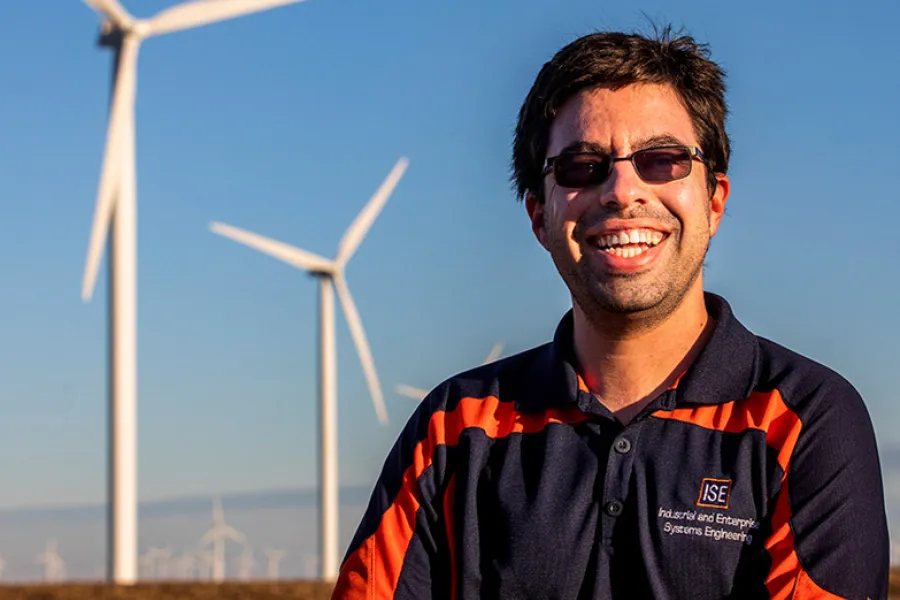CHAMPAIGN, Ill. — On a gusty October day, I find myself staring at my wind turbine-simulation results. I take a sip of coffee and smile: The results validate a promising hypothesis.
My research focuses on the design and control of wind farms. Two key factors contribute to the power a wind turbine generates: the incoming wind velocity and how fast the turbine blades rotate. Each turbine hosts its own internal computer that measures wind speed and assigns it a specific operating torque. The computer is designed to maximize the individual turbine’s power output.
But my research objective is to get all the turbines in a wind farm to work together as a collective. Early works have shown that each turbine acting in its own best interest will actually lead to less power generation than control schemes that focus on the farm as a whole.
My hypothesis about how to do this arose unexpectedly one day as I was driving to Chicago to visit my fiancée. For some reason, my GPS chose to take me off the main highway and onto country roads, and I found myself traveling through a wind farm. It was a lucky coincidence: A thick mist lay on the horizon and, thanks to the fog, I could see the turbulence fields each turbine generated in its wake.
I knew that turbines generate a disturbance field, and that the turbulence from one can affect the turbines downwind. But I had never thought of the turbines as being coupled together – the impact of upstream turbulence directly correlates to the power generation of downstream turbines. The fog allowed me to visualize this coupling explicitly.
Back in the lab, I was able to take this insight to build better control systems. Now I can run high-fidelity simulations to test – and in this case, validate – each new idea.
What began as just an idea blossomed into an exploration of different methodologies to lessen the effects of upstream turbines. I’m now exploring a technique called “wake steering.” By intentionally misaligning turbines, I can design a controller to skew the wakes to one side, even avoiding some downstream effects altogether! This means that the power of the wind farm as a whole can be improved without necessarily changing any of the external components.
I gaze down and see that my mug is nearly empty. I enter a new set of simulation parameters, hit “RUN SIMULATION” and go to refill.
+++
Photo caption: Graduate student Lucas Buccafusca looks for ways to improve the efficiency of wind farms. He had a key insight on a foggy day near a wind farm in central Illinois.
Photo by Fred Zwicky
Story by Lucas Buccafusca gradaute student, Department of Industrial and Enterprise Systems Engineering, reposted from the Illinois News Bureau (Nov 21, 2019).
Lucas Buccafusca took second place in the Graduate College’s 2019 “Research Live!” challenge.
Subscribe to Behind the Scenes for short blog posts, photos and videos from Illinois faculty, researchers, students and staff about their work and lives. Send an email with “SUBSCRIBE BTS” in the subject line.
